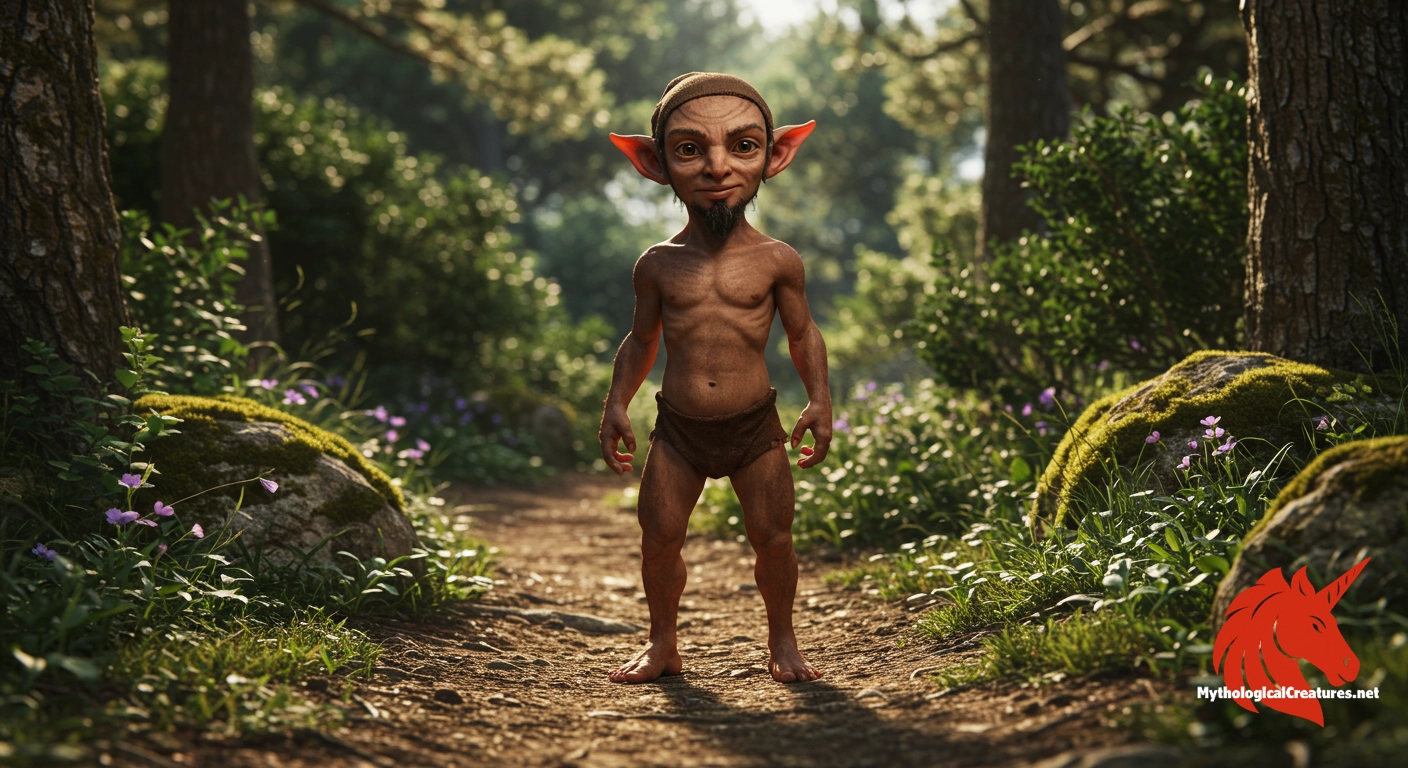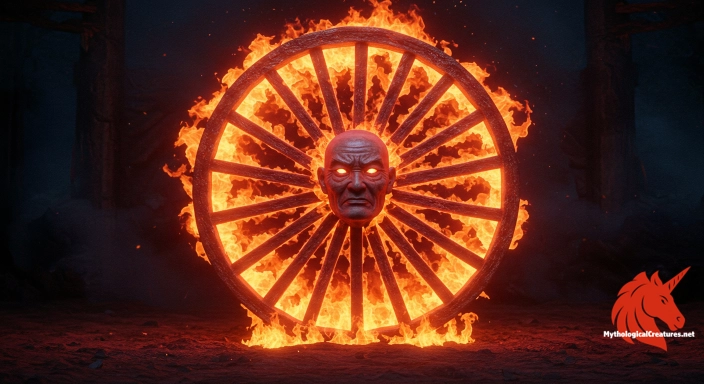Duende: Duendes are small, humanoid creatures from Iberian and Latin American folklore, often seen as mischievous household spirits.

Duende
Duende - Duendes are revered as enigmatic tricksters that embody both the playful and mysterious aspects of folk belief.
Origins & First Encounters
The duende emerges as a compelling figure from the intertwined folklore of the Iberian, Ibero-American, and Latin American realms. This enigmatic being first appears in cultural narratives as a diminutive and spirited humanoid, often celebrated for its blend of mischief and mystery. Its origins are steeped in centuries of oral tradition, where local customs and ancient pagan elements merge with later Christian influences. The creature’s early attestation can be traced to rural anecdotes and folk tales that highlight its involvement in everyday domestic affairs. Many tales depict the duende as capricious, at times benevolent and at others troublesome, reflecting the unpredictable forces of nature and fate. Its character has been shaped by myriad influences, from agricultural rituals to urban legends, creating a multifaceted representation. The duende has found a home in both the whispers of village life and the vibrant expressions of regional art. Over time, this figure has become a symbol of the unknown, embodying the hidden layers of human existence. Its continuing allure lies in its ability to simultaneously comfort and unsettle those who encounter its story.
Source Texts & Tale Variants
Folkloric accounts of the duende are preserved in an assortment of ancient texts, local ballads, and oral recitations passed down through generations. Early references in Spanish literature hint at a creature that dwells on the boundaries between the seen and the unseen, though precise historical documentation remains scarce. Diverse manuscripts and regional compendia have accrued a rich tapestry of narratives in which the duende plays various roles. Among these narratives, some portray it as a gentle guardian of households while others describe it as a trickster who delights in playing pranks on unwary passers-by. The creature’s portrayal has been further enriched by folk theatre and popular storytelling events that continue to circulate its exploits. Xenial dialogues in rural communities often celebrate the duende as part of seasonal traditions and fertility rites. Variants of its story have been noted in both archival collections and in the vibrant oral histories of myriad villages. Each iteration of the tale adds its own colour to the overall mythos, underscoring the creature’s versatility. The preservation of these stories in both written and spoken forms makes the duende a fascinating subject for folklorists and cultural historians alike.
Form & Powers
Descriptions of the duende’s physical form are as varied as the regions in which it appears, yet a few persistent traits endure in the folklore. Typically, these beings are envisioned as diminutive humanoids, often standing at around 60 to 90 centimeters tall, which accentuates their role as elusive sprites. Their facial features are frequently rendered as sharp and animated, with eyes that sparkle with mischief and a countenance that balances between wise and whimsical. Many depictions include pointed ears and a slightly exaggerated nose, lending them an unmistakably otherworldly aspect. In some accounts, duendes are described as having a wiry frame or a stocky build, depending on the storyteller’s intent to emphasise agility or durability. Their attire is usually humble, often comprised of simple, rustic garments that mirror traditional rural dress. Sometimes, storytellers embellish the image with subtle hints of magical attributes such as a soft luminescence or unexpected flashes of colour in their eyes. The physical form of the duende, though small, is imbued with an expressive detail that conveys both intelligence and a deep connection to nature. This rich visual detail not only sets the creature apart but also aids in its cultural transmission across generations.
Regional Faces
Across the Iberian Peninsula, the duende remains a fixture of domestic and rural folklore, often envisioned as a protector of the home who can either bring good fortune or mischievous disturbances. In Latin American traditions, however, the creature sometimes adopts a more enigmatic or even eerie presence, becoming intertwined with indigenous spiritual practices and sacred natural sites. Regional interpretations frequently colour the duende with traits that mirror local customs, rituals, and the surrounding landscape. In some areas, lively depictions of these beings encapsulate the playful spirit of community celebrations and harvest festivals. Conversely, in more isolated locales, the duende may be portrayed as a solitary figure, one whose interactions with humans serve as warnings of the capricious nature of the natural world. Urban legends sometimes imbue the creature with modern motifs, transforming it into a symbol of elusive misfortune in rapidly changing cities. The interplay between local environment and cultural belief nurtures distinct versions of the duende that are as diverse as the communities that recount their stories. Their portrayal can vary from a benign household sprite to a remote woodland trickster who challenges unwary travellers. Each regional variation enriches the overarching mythology, reinforcing the duende’s role as a bridge between tradition and the uncanny in different cultural contexts.
Cultural Parallels
The duende stands in intriguing contrast to similar folklore figures found across Europe, with parallels often drawn to beings such as dwarves, gnomes, and leprechauns. Unlike the often solitary and hidden nature of some of its counterparts, the duende tends to occupy a fluid role that oscillates between benevolence and caprice. While leprechauns in Irish mythology are known for their hidden treasure and trickery, the duende’s mythos encapsulates a broader spectrum of behaviours, from playful guardian to a mischievous interloper. In many ways, it shares the common traits of small stature and a penchant for ambush-like pranks with entities like brownies, yet it also exhibits unique characteristics tied to its Iberian roots. Comparative analysis highlights that, unlike some European mythic creatures, the duende’s narratives are deeply intertwined with the everyday social and agricultural life of its communities. These figures often serve as symbols for the unpredictable forces of nature and fortune. The fluidity in their persona is reflective of a broader cultural interpretation that embraces the contradictions of human experience. Cross-cultural examinations reveal that while similarities abound, each creature’s myth reflects the distinct historical and environmental influences of its origin. The duende, therefore, continues to comment on the universal interplay between the seen and unseen, offering insights into both regional identity and common mythic themes.
Legacy & Modern Evolution
The transformation of the duende’s image over time is a testament to its enduring cultural impact and flexibility as a symbol. What began as a loosely defined mischief-maker in old rural tales has evolved into a figure celebrated in modern literature, art, and even digital media. Contemporary renditions often capture the duende’s dual nature, highlighting its charm and enigmatic appeal while also acknowledging its capacity for playful trickery. Artists and writers now frequently incorporate the spirit of the duende as a metaphor for the unexplained qualities of life and the unforeseen twists of fate. In urban settings, where daily routines meet the extraordinary, the duende sometimes appears as a gentle reminder of the magic that may lie just beneath the surface of the mundane. Modern adaptations have bridged the gap between traditional folklore and popular culture, reinvigorating the creature’s myth through festivals, storytelling sessions, and multimedia projects. Such depictions are often imbued with a nostalgic reverence for the past, while also embracing the creative possibilities of reinterpretation. The evolving nature of the duende's portrayal illustrates how folklore can adapt to the changing cultural landscape. Today, the legacy of the duende continues to inspire a sense of wonder and curiosity, maintaining its status as an enduring emblem of mystical charm.
Interesting Fact
Duendes have been so deeply woven into local folklore that their presence is invoked in everyday superstitions and literature, marking them as unique emissaries of cultural mystery and mischief.
Quick Creature Info
Features:
Associations:
Our Mythic Legendary Rating:

Habitat:
Supernatural Powers:
Physical Attributes:
Abilities:
Behavior:
Weaknesses:
Lore:
Related Creatures, Tales or Lore
- DDwarves
- GGnomes
- LLeprechauns
References
Discover Another Mythical Legend You May Not Have Heard Of?
Uncover the mysteries of ancient folklore and expand your knowledge of legendary beings from cultures around the world.
Dare to Meet the Wanyūdō....
Mythical Disclaimer: The images and data on this site are derived from various historical and literary sources, but we have found that many myths often have multiple versions and interpretations across references, sometimes contradictory. As a result, these creature depictions are artistic interpretations—imaginative blends of folklore, legend, and a dash of AI guesswork. Because creature descriptions vary widely, our illustrations and accompanying information represent our best effort to honor mythology while bridging creative gaps. Enjoy these interpretations—just remember, we've done our best to respect the stories and validate available data, but in the realm of mythology, details often shift, imagination leads the way, and nothing is ever set in stone!
Curated by the Mythological Creatures Team (rev. May 2025)
